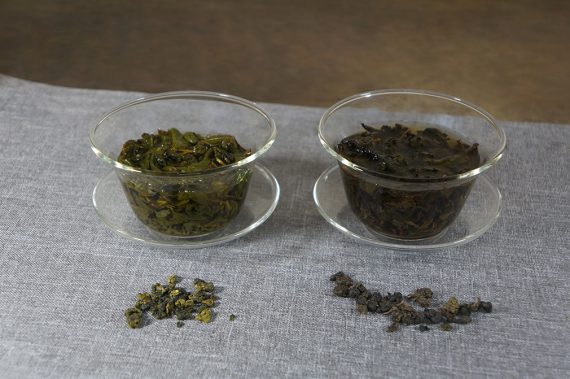Introduction to oolongs

Tea collections vary depending on personal taste and thought-out benefits. To some people oolongs can be an enjoyable addition to their collection. “People like oolongs for their aroma. Distinct, diverse… whole range of aromas. Those are oolongs.”, notes Tatiana Bogdanova, founder of East-West Teacup. The best and most famous oolongs are produced in Taiwan and China and could very from the lightest (green) to the darkest (roasted) teas.
Oxidation is one of the most important factors responsible for the lightness and darkness of tea. It is a process of transformation, a particular stage of production method, which achieves biochemical reaction in the tea leaf to inform the taste and the colour. In fact, none of green teas are oxidised. White teas are lightly oxidized, and black teas go through the process of full oxidation.
Oolongs are a separate tea category. They are semi-oxidised. Dark oolongs could be difficult to distinct from black tea due to high – 80% – 85% – oxidation level. These highly oxidised oolongs can appear dark colour. While lightly oxidised oolongs are small, shiny, green pellets. The final tea processing stages would be the reason for this necessary transformation. It is worth noting that green oolongs would be impossible to confuse neither by shape nor by aroma with white or green teas.
The lower the oxidation level of oolong the more floral, lighter coloured tea with lighter body and brighter taste you would encounter. While higher oxidation levels would mean more fruity taste, heavier body, and darker colour of the beverage.
Oolong teas are the most complex in their processing. Beginning from the terroir and season of harvesting, to following through all the processing stages, oolongs are carefully prepared to be brought to you.

